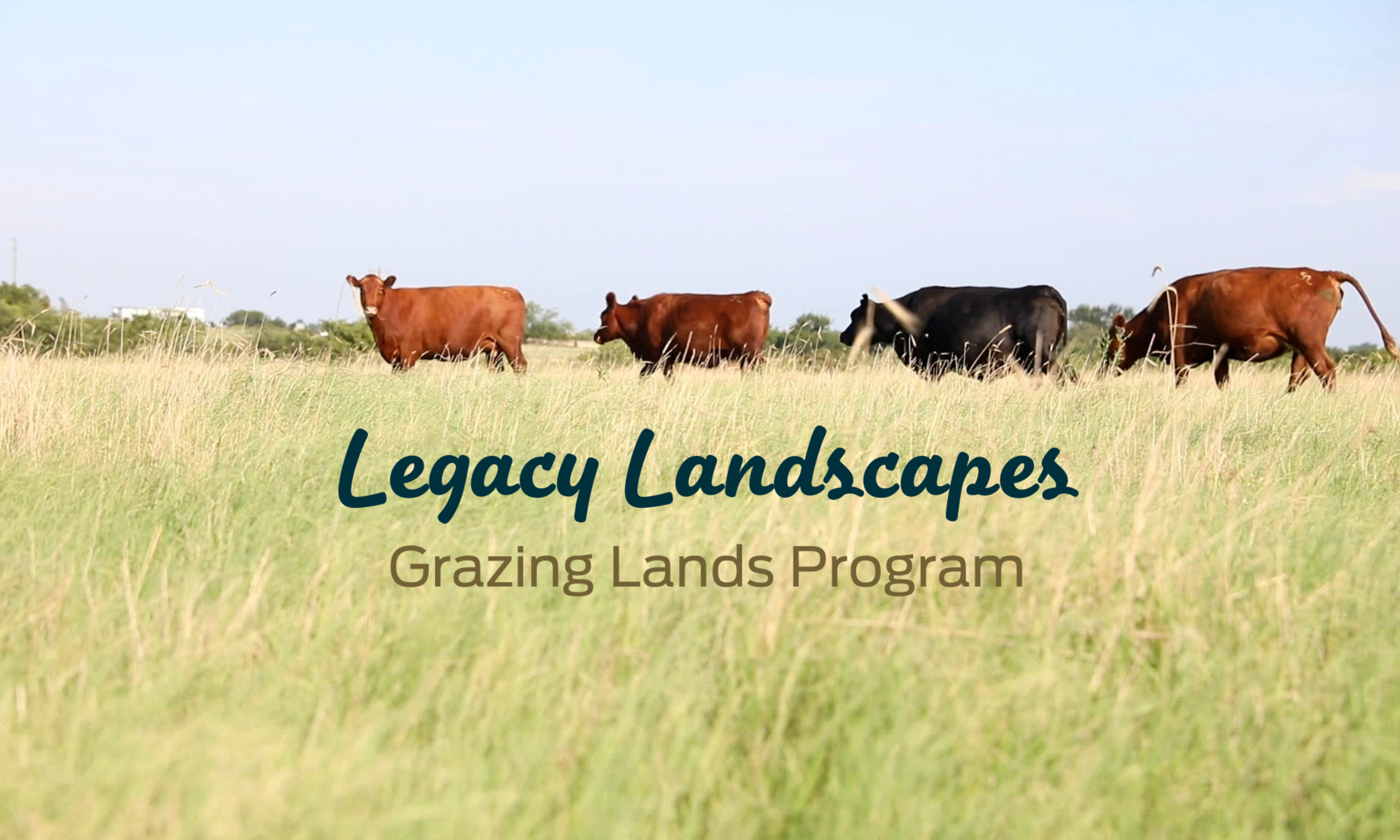
The Legacy Landscapes Program is designed to give farmers & ranchers the credit they’re due for their stewardship of our grazing lands. This initiative aims to support livestock producers in record keeping and implementing grazing land improvements that benefit both their operation and the environment. The program is being funded by Nestle® Purina PetCare, who utilizes beef byproducts in their pet food, and has a carbon reduction goal to reduce emissions within their supply chain.
Through participation, producers will receive access to an operation-level management software program through AgriWebb, assistance from NatGLC in utilizing the software along with technical assistance and consultation for their operation, and guidance on financial opportunities to make their goals reality.
NatGLC is currently recruiting ranchers to participate in the Legacy Landscapes Program in Texas, Kansas, and Nebraska, with expansion into additional states in the future.
What We Offer
Technical Assistance: Guidance on gathering baseline operation information and help getting it into the the AgriWebb platform; decision-making support for your operation, and financial assistance guidance and support.
AgriWebb Platform: Access and subscription to the AgriWebb platform for your operation.
Grazing Management Plans: Support in developing or improving your existing Grazing Management Plan (GMP).
Grazing Land Improvement Practices: Technical assistance in implementing beneficial practices tailored to your operation’s goals.
Financial Incentives: (1) Producer incentive payment for participation and data collection, and (2) potential inset credit payment for the implementation of one or more of the eligible improvement practices*.
*Grazing Management Improvement Practices
Why Participate
Support and Guidance: Receive expert technical assistance throughout the project.
Operational Benefits: Improve decision-making and operational efficiency with tailored management plans and record-keeping software.
Environmental Impact: Contribute to reducing the carbon footprint of beef production and its positive story of stewardship.
Financial Rewards: Access financial incentives for participating in data collection, and a second payment through the implementation of new practices and the associated inset carbon credit generated.
What our producers have to say
“The management philosophy of our cattle company is based on Chief Seattle—we do not inherit the land from our ancestors, we borrow it from our kids. Under our management, the ranches will be in better conditions when we leave than when we started managing it.”
Alfonso "Poncho" Ortega, Legacy Landscapes participant
“Making improvements is a very manageable task if you do it one step at a time–and what fits with your operation and your workflow that you already have established. There’s not a one-size-fit-all type solution.”
James K “Rooter” Brite Jr., Legacy Landscapes participant
Eligible Practices
-
New/Improved Vaccination Protocol (vet recommended, other formalized protocols)
BCS Monitoring (monitoring with pictures in GMP); match animal needs with proper forages
New/Improved Genetics (match environment and GMP/operational goals)
Improved Reproductive Efficiency (through artificial insemination or other means)
New/Improved Weaning Protocol (balancing calf efficiency and breed-back of cow)
New/Improved Culling Protocol (appropriate to environment and GMP/operational goals)
Supplements/Additives
Enzymes/Yeast
Ionophores
Probiotics
-
Improved Forage Diversity (part of GMP operational goals); match animal needs with proper forages
-
Synthetic Fertilizer Reduction
Biologicals/Legume introduction
No Till/Reduced Till
Cover Crops
Also could apply to grazing lands under Forage Diversity
How It Works
-
Recruitment: Under current funding NatGLC will recruit up to 50 ranches in Texas managing approximately 17,000 head of cattle.
Data Collection: NatGLC will work with each producer to collect operational data through AgriWebb’s platform. Data such as inputs, herd movements, animal weights, and/or pasture/paddock locations, and grazing management approaches.
Financial Incentive: The producer will receive $5/head payment on top of the no-cost-to-you AgriWebb subscription once baseline data collection is complete.
-
Technical Assistance (TA): The NatGLC TA providers will help each producer with the development of a new Grazing Management Plan (GMP), or review of a current GMP. If there are operational changes desired, the TA provider will help the producer find financial opportunities to support the changes.
Funding Opportunities: Under this program there is a list of eligible practices that can directly create a carbon inset credit with a corresponding financial payment to the producer (financial incentive #2 mentioned above). If that menu of practices does not match the producer’s goals and desires the TA provider can aid in finding the other opportunities.
Practice Implementation: The NatGLC TA provider will provide technical guidance on practice implementation if the producer chooses to implement one or more of the Legacy Landscapes eligible practices.
-
Quantification: Operational data collected through AgriWebb will flow to the quantification partner, Regrow, who will quantify the carbon emissions reduction from any eligible practices implemented and generate an inset credit. The producer receives payment for that credit and Purina receives the credit towards their beef emissions reduction goal.
Check out our recent Graze on Over webinar to learn more about the program
Who You Will Work With
Technical Assistance from NatGLC will be provided by our Central Region Manager, Bill Fox. Bill is a 4th generation Texan and producer from Bee County, Texas. Growing up on his family's Texas Land Heritage operation in Pettus, Bill learned to appreciate the many values of Texas rangelands. He received his B.S. in Range Science from Texas A&M University, a M.S. in Animal & Range Sciences from New Mexico State University, and his Ph.D. from Texas A&M University in Rangeland Ecology & Management. After about 30 years working within the Texas A&M University System in research, teaching and Extension, Bill decided to retire and join the NatGLC our Central Region Program Manager, working with producers and stakeholders throughout the Great Plains.







